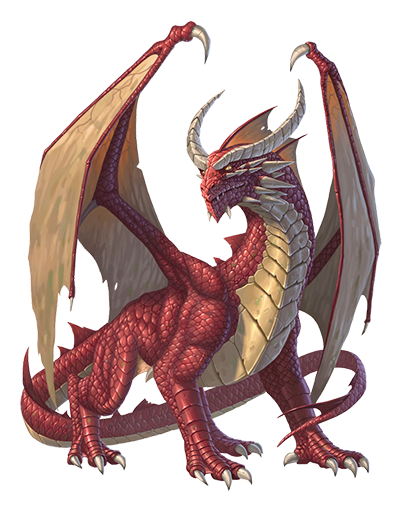derekguder wrote:
From one perspective, it
is considerate to have a couple extra characters on hand to let a few more people play.
However, players may also feel really put on the spot if the decision to let someone play something they're
very excited about. No one wants to appear selfish or exclusionist, even if the addition may change the dynamic at the table and (potentially) ruin much of the fun.
So stick with the parameters of the game whenever possible.
If you are able to accommodate more players than you initially submitted an event for, why didn't you submit it for the higher number? Why hold something in reserve?
A lot of this advice is for board games or RPGs where there adding even one or two players can dramatically change the table dynamic - some games just don't work for larger numbers, and it means less time for each player in the spotlight. We all know RPGs that work great at 3 or 4 but are just not something we're interested in at 7+. Or board games that are great at 3 but not so much at 4.
For some other larger events, like big card game tournaments or LARPs, the effect of adding another player may be pretty minimal, and we certainly recognize that.
Gen Con isn't monitoring each table and there are going to be situations that are perfectly reasonable exceptions to this guidance, which is why we don't have a process to audit and review events that end up going over their max players.
But in general,
do not plan ahead to accommodate more players than you had originally submitted for. If you want to run the event for more players, then just submit it for more players.
Do not reserve spots at a game for friends or family members. Event submissions are not to be used for folks to find places to play with folks they already know, per se. If anyone just needs space to play with friends, they can ask any local event HQ when they are ready to play and we'll find a table for them.
Do not reserve spots in a game for walk-up players. Don't prioritize onsite attendees over those who wanted to pre-register, basically.
Make sense?
-
Derek Guder
Senior Event & Program Manager
Gen Con LLC
Totally makes sense. And I get what you're saying--all those years previously of players not objecting at RPG tables might easily have included some who'd like to object, but saw that everyone else was for it and didn't want to be a jerk, so...
The thing about player totals is, also as you say, different for LARPs than for tabletop RPGs. If I'm writing an RPG module, it's carefully balanced for a general range of number of players. If I plan for 4, I can probably tweak things for up to 6 without major changes. Maybe down to 2. But with dice involved, there's only so far before you're scrapping everything you created.
But writing a LARP is all about the character interactions, and there can be really as many as you feel like writing :) So here's the window into the process as we do it, just so I can explain myself. The choice to set a number of players has a lot of factors:
- How many GMs are going to run it? One GM can handle a game up to around 24 people or so (depending on the type of game, some need more GM-Player time, others less, while the game is running). Two GMs, into the 30s. And etc.
- What's the setting? Stuck on a life-raft, versus in the stands at a baseball game (one setting I would love to run a game using).
- What plots/events are you cooking up? This is the biggest factor. At some point, you look at a game and say "Okay, that's enough going on for a small midwestern town on prom night". And then you figure out how many characters are 'attached' to each plot. The plot to kill the king, as you're writing it, is a small plot. So there's a natural cap on how many characters once you put all that together.
- And then there's just the matter of "we have to start writing at some point, we can't keep adding characters right up to the con". For our games, the characters are all interconnected. Your sheet has a list of people you know, what you know about them, etc. So formally adding a character involves changing numerous other character sheets.
So at some point early in the process, you arrive at a number. This is going to be a 30 player game, you say. You submit it, and get to the serious writing. And then along the way, ideas occur to you. Hey, there could be a butler in the game! And if you like the idea enough, maybe you formally add the character and bump up the number. If you don't like it enough, you don't write the character. Or you do, then set it aside when you realize you don't like it as much. But then even if you've bumped the number, you might see another possible character later on--there could be a street urchin too! And this keeps happening, because the ideas just keep coming :) At some point, you have to cap the game. And even then, you'll have simple concepts floating around--the lovable male prostitute, the banker, etc. Because you can't keep adding characters officially all the way up to game time, these concepts just float there. Others are concepts that you played with, and then got rid of for various reasons--maybe just wanting to keep the game a certain size, and you picked one character over the other and cut one. You aren't planning on that character anymore...but you even have them written up.
The general principle of how it works out is: If the game is set for X players, you will always have at least X+1 character ideas in your head. Just the way it goes :)
So that's why there are character ideas there in your head--and maybe even written up characters--without those characters being added as official spots, if that makes sense. You've got the characters you want to run the game with, but because you know the game so well, you know who else could be there.
And then when that player shows up who really would like to play... :) And we do read the room when we make those decisions, but you're right again about that LARP/RPG difference. It would be very strange for one of 30 people up in the Lincoln Rooms to object to a 31st player being added. Whereas going from 4 to 6 is a 50% increase, and will impact the game experience much more. For LARPs, I've honestly played in games where I didn't even know how many people were in the game. Iocane used to run a Battlestar Galactica LARP--the lights were down, sound effects were going off, people were everywhere--I can't tell you to this day how many players there were each year. 40? 50? 60? We didn't have lists of characters, didn't know who many of these people were. I wouldn't have even been able to tell you if someone was added last minute. And for our games, I never see anyone do anything other than nod when we announce "There's now a butler in the game!" I do look, and I'm observant. But no one seems upset.
So I just say that to explain. I get where you're coming from, and I appreciate the concerns you have to deal with. What it's always been for us is that we submit the game for the number we really do want to run--but when no one's experience will be made worse, and there's a player standing there wanting to play, and we have an idea there for a character who could be inserted into a game of 24, 30, 40 people without a hiccup, historically we haven't seen why not to.
But we don't hold spots or characters for people without tickets, or plan on characters being there without having a ticketed slot for them, to be clear. Whenever we've done that in the past, it's been "Well, yeah...if you really want to play, how would you like to be a sneaky butler?" and not "we've got this character we want in the game that we didn't have a ticketed slot for", and definitely not "show up without a ticket and we'll give you this character we wrote who we want in the game".
Thank you for the info and the discussion, it's much appreciated. I hope I'm not coming across as 'defiant' :) Just wanting to say why in the past sometimes we've done that. All in the end to make as many players happy as we possibly can :)

